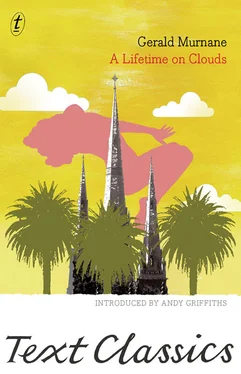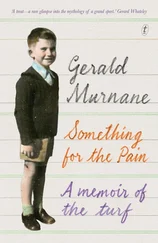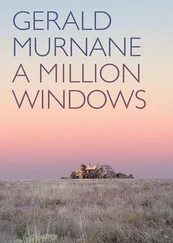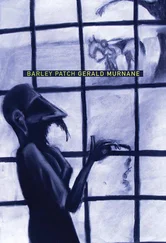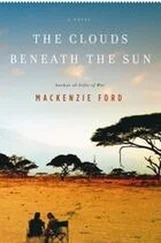Gerald Murnane - A Lifetime on Clouds
Здесь есть возможность читать онлайн «Gerald Murnane - A Lifetime on Clouds» весь текст электронной книги совершенно бесплатно (целиком полную версию без сокращений). В некоторых случаях можно слушать аудио, скачать через торрент в формате fb2 и присутствует краткое содержание. Год выпуска: 2013, Издательство: Text Classics, Жанр: Современная проза, на английском языке. Описание произведения, (предисловие) а так же отзывы посетителей доступны на портале библиотеки ЛибКат.
- Название:A Lifetime on Clouds
- Автор:
- Издательство:Text Classics
- Жанр:
- Год:2013
- ISBN:нет данных
- Рейтинг книги:3.5 / 5. Голосов: 2
-
Избранное:Добавить в избранное
- Отзывы:
-
Ваша оценка:
- 80
- 1
- 2
- 3
- 4
- 5
A Lifetime on Clouds: краткое содержание, описание и аннотация
Предлагаем к чтению аннотацию, описание, краткое содержание или предисловие (зависит от того, что написал сам автор книги «A Lifetime on Clouds»). Если вы не нашли необходимую информацию о книге — напишите в комментариях, мы постараемся отыскать её.
Earnest and isolated, tormented by his hormones and his religious devotion, Adrian dreams of elaborate orgies with American film stars, and of marrying his sweetheart and fathering eleven children by her. He even dreams a history of the world as a chronicle of sexual frustration.
A Lifetime on Clouds — читать онлайн бесплатно полную книгу (весь текст) целиком
Ниже представлен текст книги, разбитый по страницам. Система сохранения места последней прочитанной страницы, позволяет с удобством читать онлайн бесплатно книгу «A Lifetime on Clouds», без необходимости каждый раз заново искать на чём Вы остановились. Поставьте закладку, и сможете в любой момент перейти на страницу, на которой закончили чтение.
Интервал:
Закладка:
The landscape at Orford was all low green hills. Every few hundred yards along the roads was a farmhouse of white weatherboards with a red roof. Near every farmhouse was a dairy and milking shed of creamy-grey stone, a stack of baled hay and a windbreak of huge old cypresses.
Adrian’s uncle and aunt had seven children. They played Ludo and Happy Families and Cap the Dunce for hours on the back veranda. Sometimes they read Captain Marvel and Cat-Man and Doll-Man comics in the lowest branches of the cypresses or tried to act stories from their comics around the woodheap and the haystack. Adrian asked them whether any parts of their district were still unexplored. They said they weren’t sure, but they climbed onto the cowyard fence with him to point out that their own farm was nothing but grass and barbed-wire fences.
Adrian stood on the highest rung of the fence and looked all round him. The only hopeful sign was the roof of a strange building behind a line of trees on a distant hill. The heat off the paddocks made ridges and shapes like battlements in the roof. If the right sort of men had been the first to find their way to the lonely parts of Australia, the building might have been a temple of the Sun-God or a palace of pleasure.
But on the following Sunday Adrian went with all his uncle’s family to mass and found that the building on the hill was St Finbar’s church.
Not just the things that might have happened, but many important events that actually happened were missing from Australian history books. Adrian often thought about the early settlers. What did a man think when he sat down at night and realised he was the only human being for fifty miles around? If he was an Irishman he probably remembered that God and his guardian angel were watching over him. But what if he was a convict shepherd who had never been to church, or an English farmer who didn’t take his religion seriously?
Somewhere in Australia, in a warm sheltered valley overhung with wattles or in tall grass in the lee of an outcrop of boulders, there should have been a granite obelisk or a cairn of stones with an inscription such as:
NEAR THIS SPOT ON THE EVENING OF
27 DECEMBER 1791
ALFRED HENRY WAINWRIGHT AGED 19 YEARS
BECAME THE FIRST EUROPEAN TO COMMIT
AN ACT OF SELF-ABUSE
ON AUSTRALIAN SOIL
Of course the Aborigines had been in Australia for centuries before the white men, but no one would ever know their history. They had lived a carefree bestial existence. Some of them, like King Parajoulta of Blue Mud Bay with his eight wives, showed signs of imagination. But without books or films they had no inspiration to do unusual deeds.
Adrian knew he was right to complain about the dullness of Australian history when he found a certain illustrated article in People magazine. Far out beyond the prairies of America, in a place called Short Creek, Arizona, a reporter had discovered families of Mormons still practising polygamy. It seemed that when polygamy had been outlawed many years before, a few men who wanted to keep up the custom had found their way to a remote district and gone on living the life they wanted.
It was one more proof that Americans were more imaginative and adventurous than Australians. There were plains and mountain ranges in Australia where whole tribes of polygamists could have settled. But now there were churches like St Finbar’s, Orford, on the hilltops and people like Adrian’s cousins staring out across the plains.
Adrian studied the photos in People. The families of Short Creek were disappointing to look at. The women had plain, pinched faces with the rimless spectacles that so many Americans wore, and barefooted children hanging onto their cotton dresses. But behind the town of Short Creek, rising abruptly from where the dusty main street petered out, was an enormous mountain range — the sort of place where a tribe of pagans or a palace with a harem of a hundred rooms might be safe from discovery for many years yet.
One morning Father Lacey spoke to Adrian’s class about the Catholic Press.
He said, ‘I don’t have to remind you that here in Melbourne we have two excellent weekly papers, the Tribune and the Advocate , to give us the Catholic interpretation of the news. One of these papers should be in every Catholic home every week of the year to give you the sort of news you won’t read in the secular press. I know of several good Catholic families who read their Advocate or Tribune from cover to cover each week and don’t buy any of the secular newspapers. I’m happy to say those families are better informed about current affairs and the moral issues of modern life than most people who can’t do without their Sun and Herald and Sporting Globe.
‘You boys are perhaps too young to realise it, but I’m simply amazed sometimes at the stories and pictures they print in the daily newspapers. In my day it was unheard of, but nowadays you can visit nearly any Catholic home and see papers lying around in full view of the children with stories of hideous crimes and lurid pictures staring up at you. It’s one more sign that we’re slowly turning into a pagan society. And far too many Catholics take this sort of thing lying down.
‘There’s one Melbourne newspaper in particular that regularly prints suggestive pictures which are quite unnecessary and don’t have anything to do with the news of the day. I won’t name the paper, but some of you have probably noticed what I’m talking about. I hope your parents have, anyway.
‘This very morning for example I happened to notice a picture on one of their inside front pages. It was what they call a sweater girl. That’s something else by the way that’s crept into our modern pagan attitudes. I’m talking about the emphasis that some people nowadays put on the female bosom.
‘Now we all know the human body is one of the most marvellous things that God created. And great artists for centuries have praised its beauty by painting it and making statues of it. But a true artist will tell you that you can’t make a great work of art if you emphasise one part of your subject matter out of all proportion to its importance. Any artist worth his salt knows that true beauty consists of fitting all the elements of a design into a harmonious whole.
‘I’ll speak quite frankly now. There are many famous and wonderful pictures of the naked female body with the bosom exposed — some of them are priceless treasures in the Vatican itself. But you’ll never find one of these masterpieces drawing attention to the bosom or making it appear larger than it really is.
‘But to get back to these newspaper pictures. I must say I find it very sad to see a young woman being persuaded to stand up and pose in an awkward way to draw attention to the bosom that Almighty God gave her for a holy purpose — and all for the amusement of a few perverted men.
‘Now this particular newspaper has been doing this sort of thing so often that we can safely say it’s all part of a deliberate plan to appeal to the lowest elements among its readers. The men who issue the instructions for these sort of pictures to be printed are sitting back smugly, imagining that all these sweater girls and bathing beauties are going to sell thousands of extra copies of their paper.
‘But that’s just where they’re wrong. Boys, I’ll let you into a little secret. There are large numbers of decent Catholic men right now who are working to make this paper clean up its pictures or else they’ll put it out of business.
‘Yes. That’s what I said. There are some of them who’ve formed a little group in this very parish of Swindon. This is real Catholic Action at work. No doubt some of your fathers are forming groups in your own parishes. The way these men are working is to bring these pictures of bosoms and under-dressed women to the notice of their workmates and fellow parishioners and friends and point out how unnecessary they are in a daily newspaper. There’s no doubt that every decent person, whether they’re Catholics or non-Catholics, will object to these pictures leaping out at them over the breakfast table or on the tram to the office. And if every one of those people stops buying the paper concerned and writes a letter of complaint to the management we’ll soon get results.
Читать дальшеИнтервал:
Закладка:
Похожие книги на «A Lifetime on Clouds»
Представляем Вашему вниманию похожие книги на «A Lifetime on Clouds» списком для выбора. Мы отобрали схожую по названию и смыслу литературу в надежде предоставить читателям больше вариантов отыскать новые, интересные, ещё непрочитанные произведения.
Обсуждение, отзывы о книге «A Lifetime on Clouds» и просто собственные мнения читателей. Оставьте ваши комментарии, напишите, что Вы думаете о произведении, его смысле или главных героях. Укажите что конкретно понравилось, а что нет, и почему Вы так считаете.
